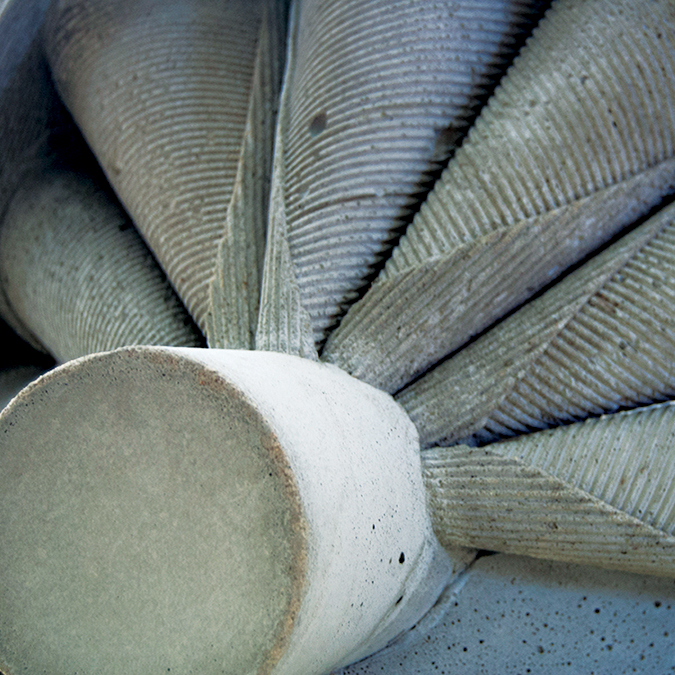
PHILADELPHIA, PA-
Tiger Strikes Asteroid wishes you all a joyful New Year. Please celebrate with us as we present our January exhibition Benjamin White: Impossible Machines, curated by Terri Saulin Frock. Please join us for the Opening Reception Friday January 3, 2014, 6-10pm
From the desk of Mr. Benjamin White:
What works? Take any invention, any system and you will find some kind of waste, inefficiency or unintended consequence. In some cases the consequence may far outweigh the contribution the invention has supplied. Oil. Nukes. Plastics. CO2. Fukushima. Great Pacific Garbage Patch. If humans do away with themselves, basically going out in “a blaze of glory” (read: a miserable, dreadful, painful, slow end) all the inventions, all the art, all the ideas – over all of humanity - will cease to be within the collective memory of human beings. Already The Holocaust, clinically perfected and precisely recorded by the Nazi war machine is becoming a distant, some would say “unsubstantiated,” memory, subject to the vagaries of nationalism, denial and falsehoods. “The truth will out.” Shakespeare says. But how does it emerge from the cacophony of misinformation, and how long does it take? The military industrial complex, health insurance, drinking water, the whole notion of financial markets are, I think, oddly, based on a strange relationship to God! An impossible machine based on faith (in the integrity of the institution); guilt (that we have not done enough to pay our own way); debt (for your kindness or your generosity); vengeance (sometimes it is ok to hit back); forgiveness (it is never ok to hit back): supporting and codifying our antic behavior as we need. And below the ethical/moral onionskin, our genetics, our predisposition for health, cancer, mayhem, order...in our own way we are also impossible machines.
Benjamin White is 51: Old enough to be old to the young and young enough to be young to the old. He has seen a fair amount of mistakes and crap-olla, corruption, dictators, dictatorial destruction, and the rise of corrupt, but “better than” systems. He is amazed that so many things work - thanks usually to a tendency among human beings to make kind decisions - and that more things donʼt go dreadfully wrong - usually due to someone suggesting that we stop doing such and such and start doing something else that is a little better. An impossible machine is one that will never work. If it works, it will never do anything. It might just be a waste of time..."
Benjamin White: Impossible Machines
January 3 – January 26, 2014
Opening Reception: Friday, January 3, 2014, 6pm -10pm
319A N. 11th Street 2H
Philadelphia, PA 19107
Images courtesy of Jaime Alvarez and Tiger Strikes Asteroid.
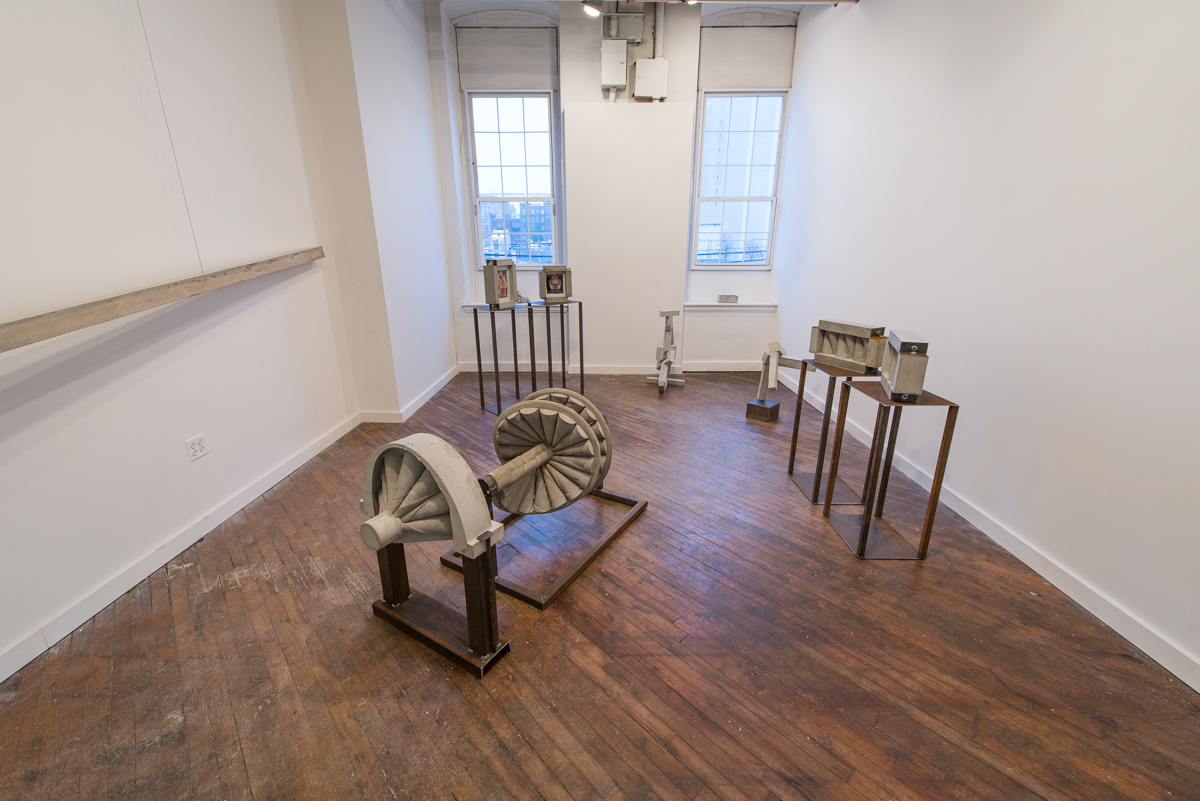
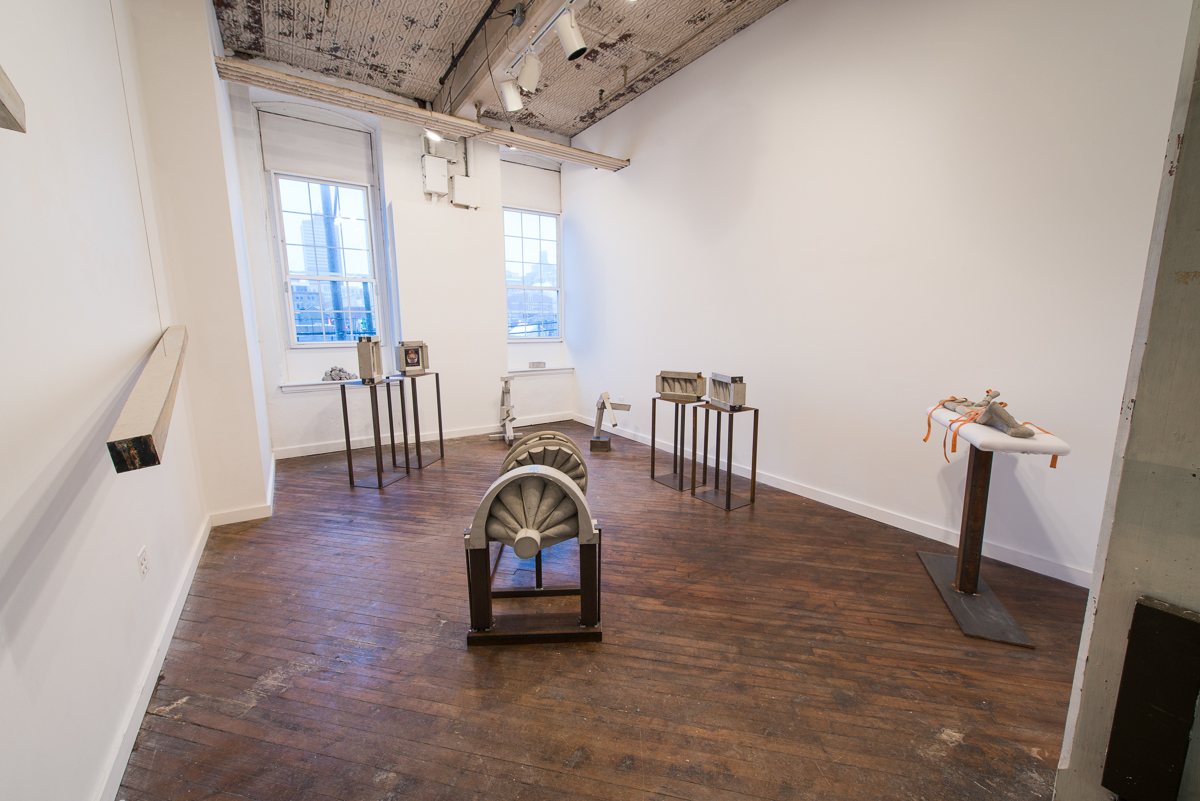
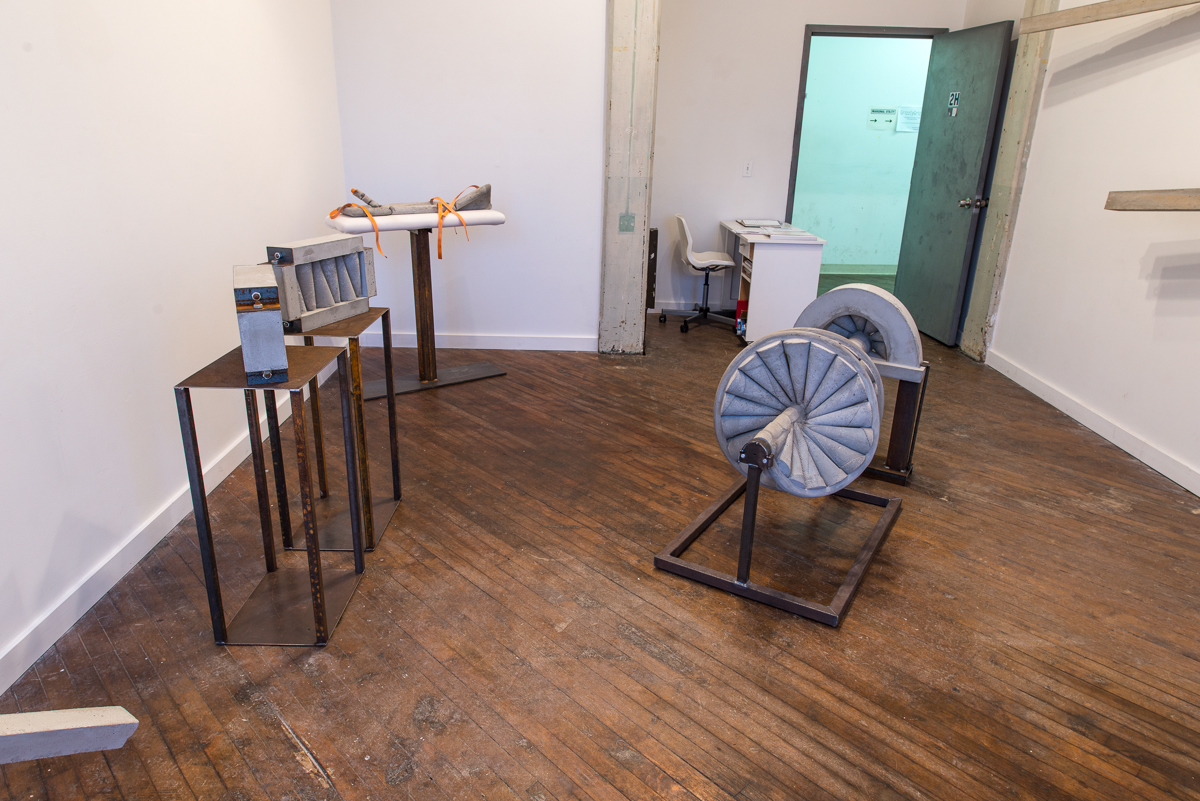
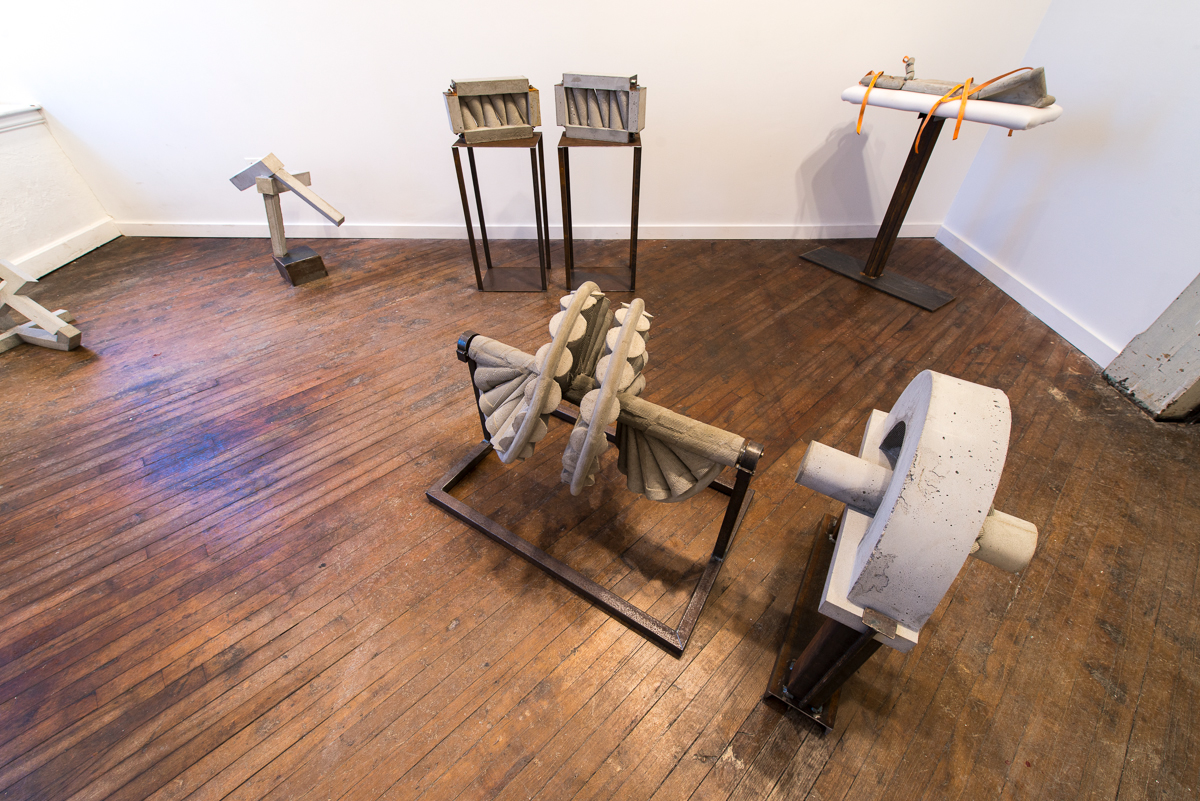
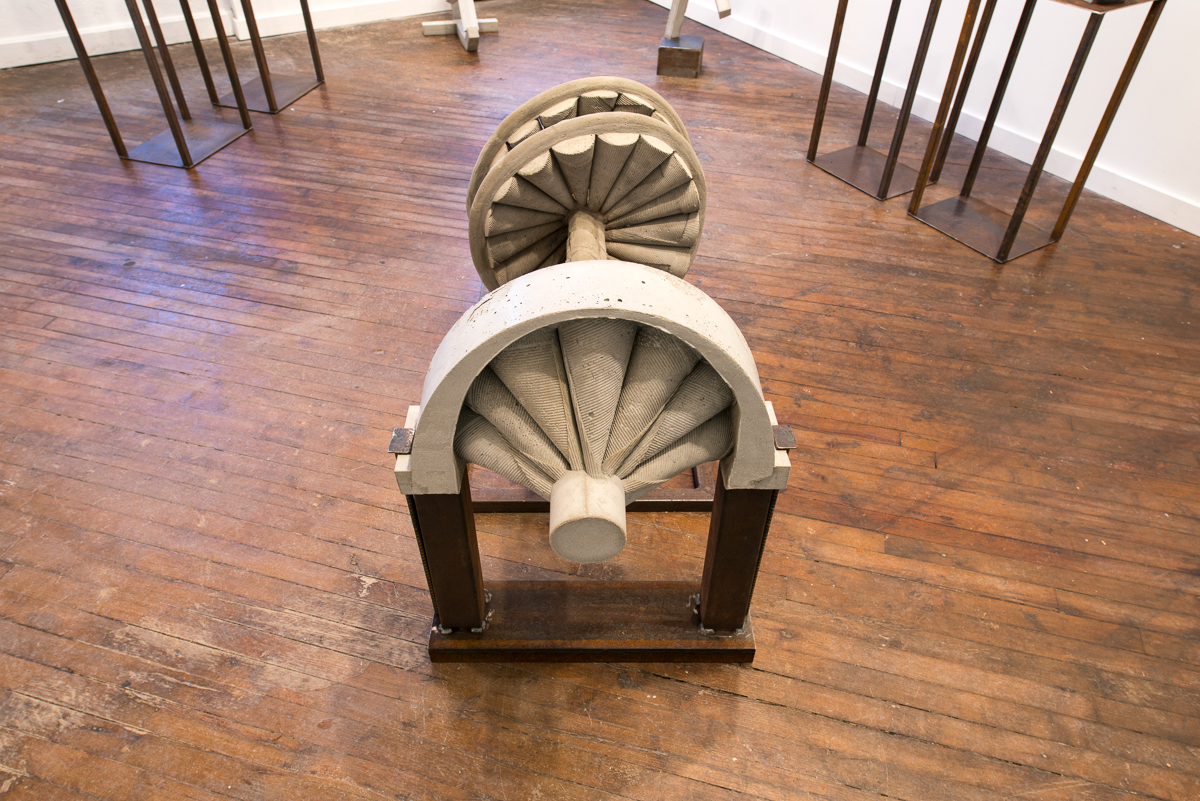
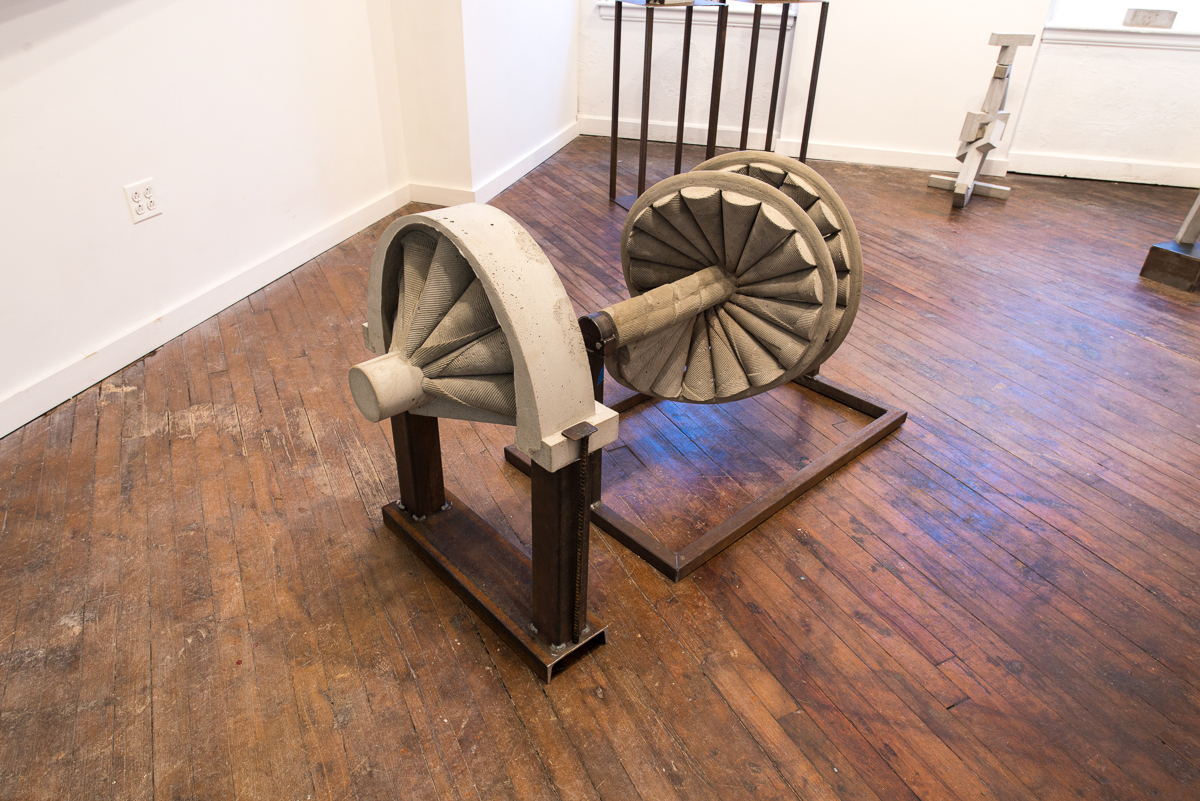
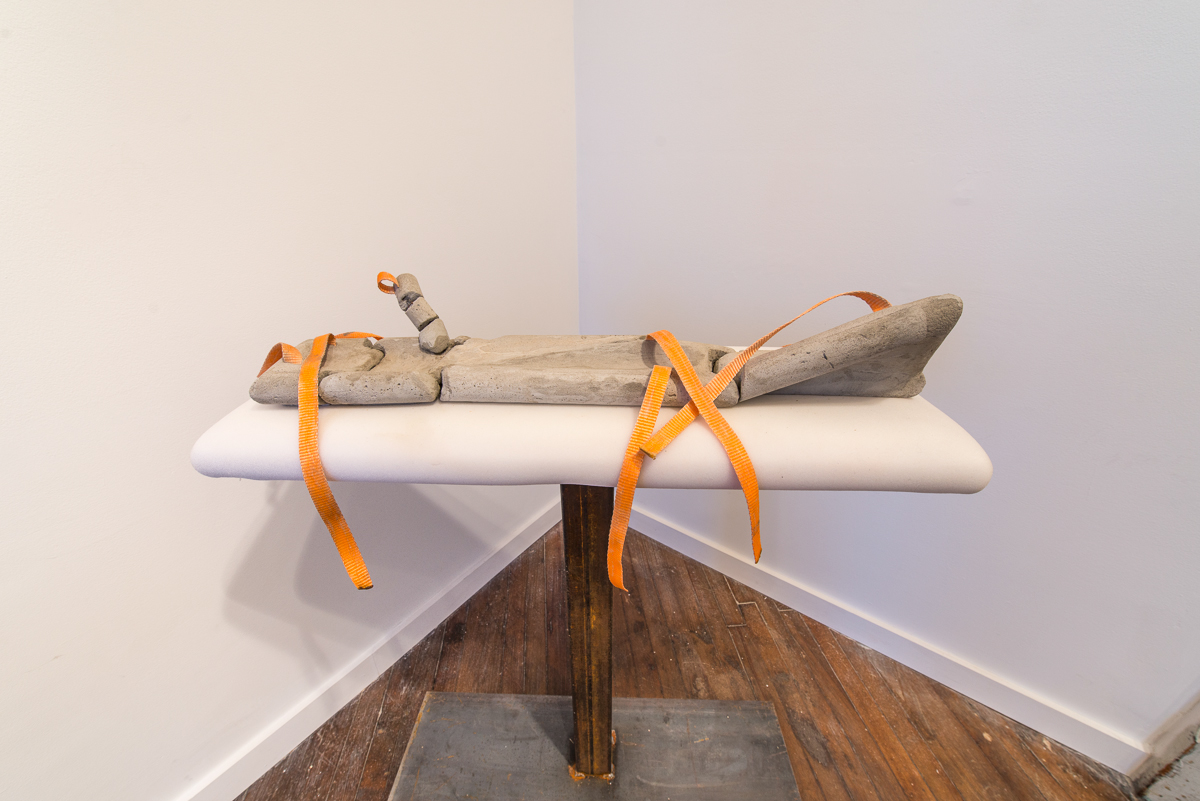
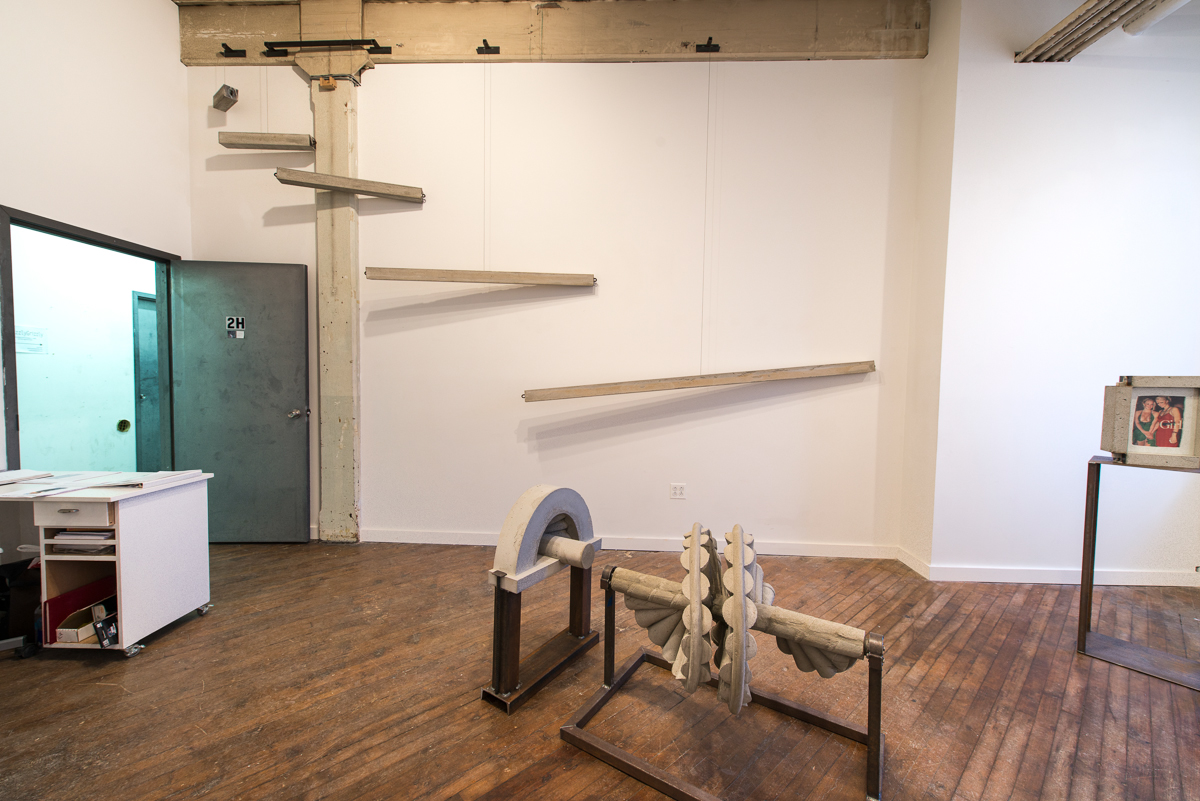
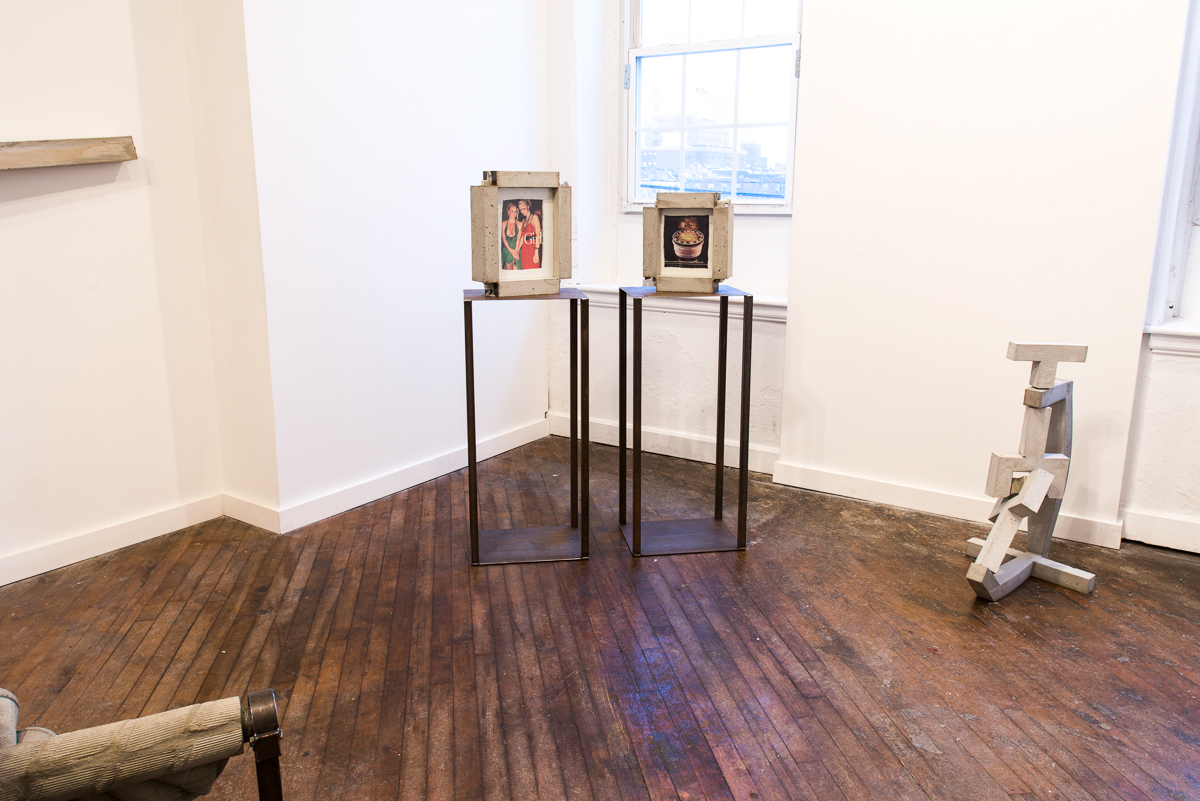
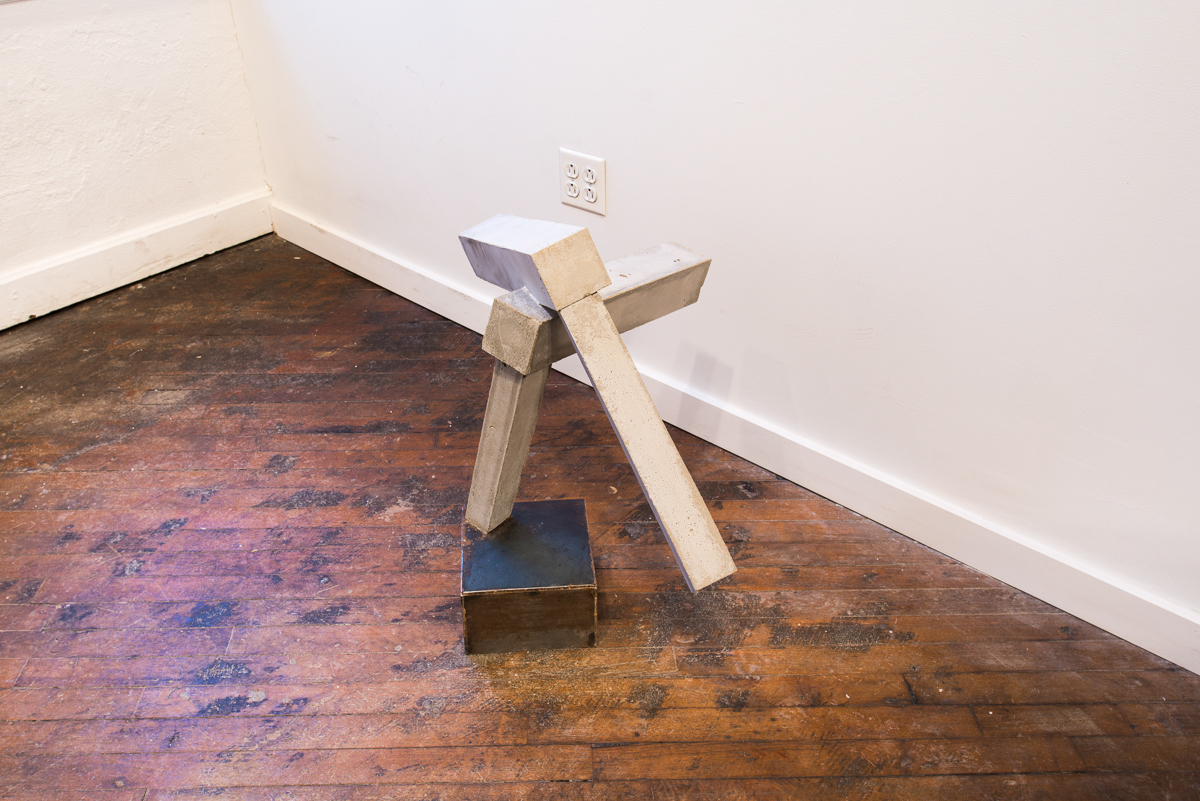


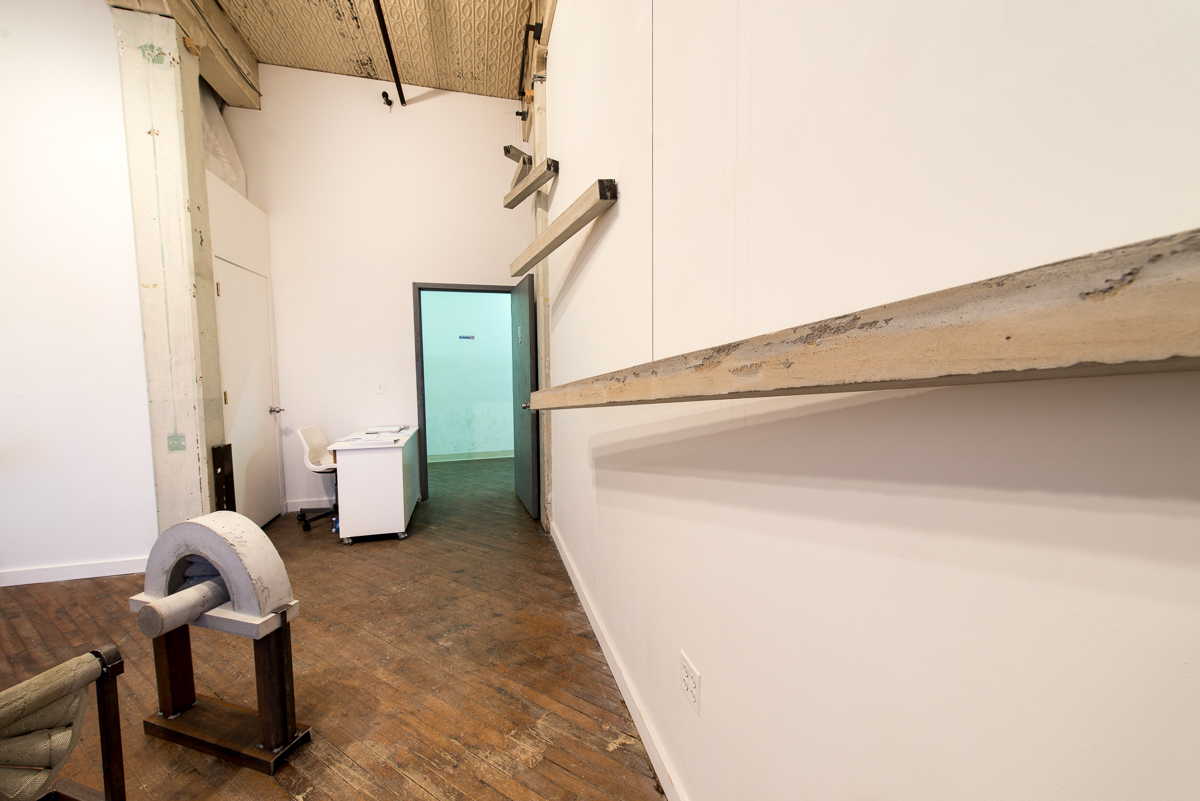
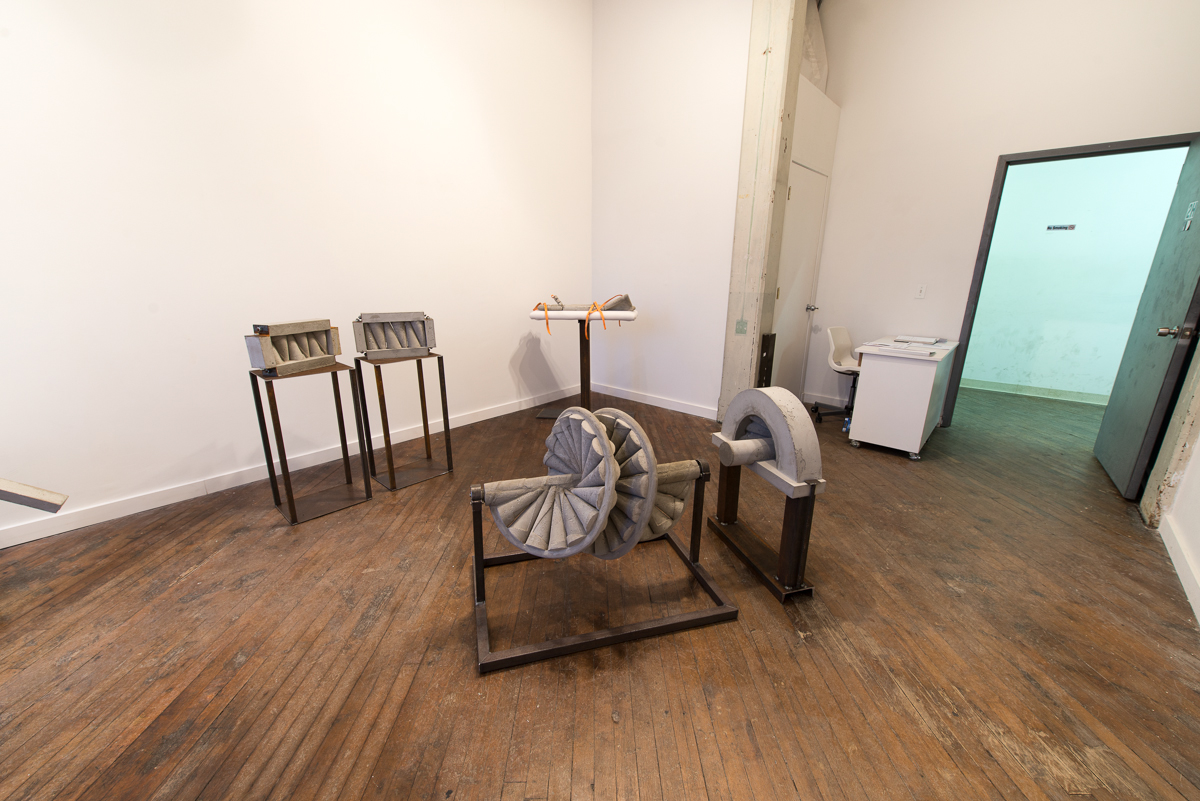

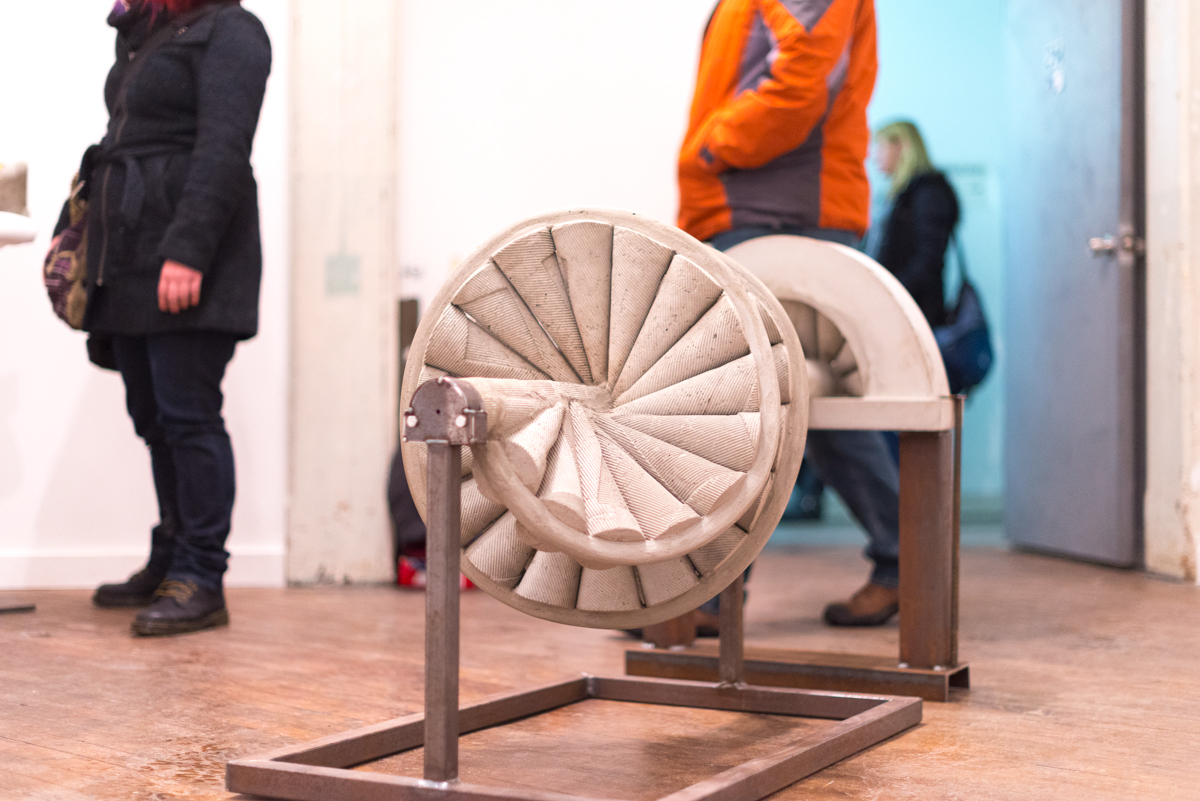
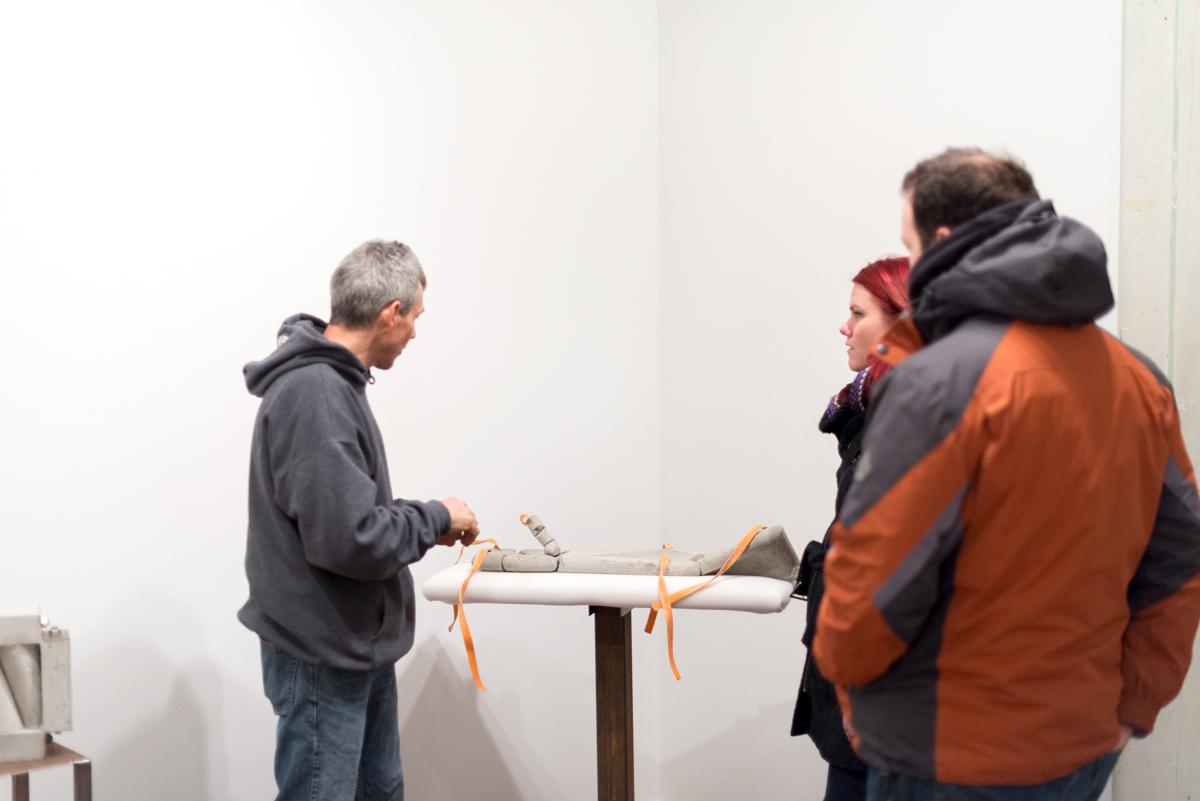

More Thoughts About Impossible Machines - Benjamin White
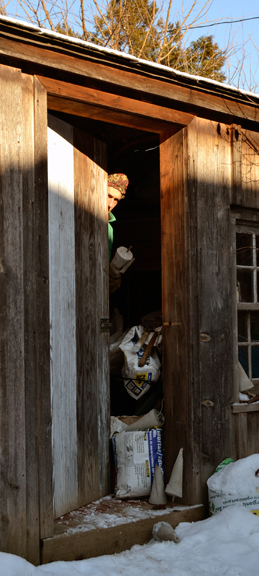
The Cement Man
In nature we see plants and animals evolve to do specific things and when conditions are right an ecosystem takes root and thrives. While thriving, everything that comes in contact with the system has a small but perhaps lasting affect. Modern man has no real concept of what Nature, in full swing, looks like. Sadly, the places most suggestive of the former glory, barrier reefs, rain forests, even the lowly bog, with its pitcher plants and floating mat of roots, lichens, rot and salamanders must be “Protected” in order to have a chance and are still beset with unique problems.
Lately, with the advances in nanotechnology, tiny insect sized drones are being developed. (Scientific American, March 2013) These tiny robots achieve flight by use of tiny actuators made of alternating laminated layers of metals and polymers. Shoot a tiny electric charge across one side of the sandwich, the metal contracts, the polymer collapses, the sandwich snaps at a hinge. That would be one flap. Perhaps these bugs will take up the slack of the Honey Bee, which is dying out at an alarming rate, and without which we will have difficulty cultivating foods in the traditional ways. Yet “traditional” farming has itself changed with the rise of the industrial mega-farm. Bees are trucked in for pollination; their tractor-trailer hives driving countless miles. With each stop, not a feast of wild flowers, or any variety at all, just corn. Corn. Soy. Soy. Corn. The monoculture farm sets up a series of disasters in and of itself: One kind of blight can take the whole crop. Thus, tampering with the genetics of the plants themselves seems the way to make single crop farms a safer bet. Lessons about diversity (of crops), ecology (pathogens, beetles) and sustainability (rain forest or Palm Oil Plantation?) are not learned by us, but outsmarted by us.
Recently, I listened to a report that discussed ownership of the Arctic within the context of its vast fossil fuel deposits. The Arctic will be easier to get to and work in by 2030: When the ice is gone. The stunning optimism of the speculators and the simple fact that someone better get up there and actually lay borders before the other guy gets the stuff below the newly exposed rock and muck (also releasing gasses into the atmosphere) really bothered me. Aren’t these the same guys who poo-pooed emissions from fossil fuels for decades! So much for New York City, I guess. All by 2030! That is rather alarming to say the least.
A world in crisis - that is very much my view.
Impossible Machines hopes to take the visitor through a few small steps, suggesting Epic Works, but on smaller scales. These shapes, the cast gears and blocks, may have been made somewhere in the world, or in nature, but they aim to be parts of some larger mysterious machine that may have once existed or may exist in the future. At first glance, the conical gears of the dynamos look like they might actually do something. Upon closer examination we see that they would never work – even if they were made of something other than commercial mortar mix.
Some Impossible Machines simply frame an ideology, or pop culture, sometimes existing on opposite sides of the same magazine page – the page itself the result of an array of machines and processes, yet wholly disposable. In this case, the page is encased in a kind of crypt, or time capsule, or head stone. “Brittany/Bin Laden” examines whether either of these two machines is sustainable and whether the
machine (Public Relations/Terror) simply determines a poster person or whether the poster person creates the incredible complexity that surrounds them.
I selected mortar as my medium because it is cheap. I buy it from Nolen Building Materials in Germantown, a family-run business since 1923. The section of the city I live in, Mt Airy, was converted from farm land starting in the late 1700’s as mills set up on the Wissahickon Creek and quarries were blasted for the stone, Wissahickon Schist, which was used to build Germantown, Mt. Airy and Chestnut Hill. By the 1870’s “developments” were going up along the new railroad lines (some stations designed by Frank Furness) as the “suburbs” were begun. The majestic stone homes we see today were once housing developments that drove the farms further from the city. The building process only slowed in the 1950’s and older residents still recall the sound of blasting from the quarries – one remains in operation. I imagine Nolen supplying mortar for the last building boom nearly 100 years ago.
I like that mortar can be cast, can finish very rough or glass smooth – or even take on a matte finish! I like that the material is hard, yet brittle, subject to chipping and uniform. It weathers, stains, lichens and moss will cling to it, all changing the dynamic of the work. The steel armature, sometimes revealed, sometimes hidden, will rust and trails of brown will leak over the cement hulk. Perhaps the pieces will crack as they cure. Each step proceeds by virtue of the conditions the piece is exposed to.
Steel is useful to support the cast piece. However, in “8,5,3,2,1” a pre-tensioned chain has been cast inside the entire horizontal length of the 3” x 3” x 8’-0” long beam. The 5’, 3’, 2’ and 1’ long beams should have little trouble being suspended by the single cable at the center point of the beam. However the 8’ beam may have trouble supporting itself. Potentially, the contracting force could cause the beam to crack at the center as the ends droop over time. The force that provides the strength of the beam, the immense tension of the chain itself, may also lead to its failure. We shall see.
Lastly, when I added movement to a piece I discovered that the shape became determined by that movement. In this way, the mortar became more like the calcium build up one might find in a clam or crab. These creatures deposit calcium where and when it is needed, creating shells that are uniform in general shape, but
unique to the individual. Hinging, open and closing, the ability to twist, or open a claw is achieved by putting the joints at angles to each other in the exoskeleton.
Thus the crab has a wide selection of circular movements available to him, even though most of his protected joints only move in one direction. To replicate natural movement the chosen shape must reshape itself by accretion as the hinging further abstracts the piece. This is true of “Ruin” which is a kind of cement arm. It can be an object, but the viewer can reposition it to create a different sculptural statement. If you push the mass of the upper arm down the whole thing may flop over and thus have a kind of movement of its own. There are straps provided and a friend can tie the arm on to your right arm for you to wear as a protective armor or to attack and clobber someone with. At the same time the arm is pretty heavy, so the wearer – battler – might quickly fatigue – as many Knights of Olde also discovered in their iron suits. The goal of the joust was to knock the Knight from his horse whereupon he would be unable to do much other than sit in his too heavy suit and wait for the death blow to be struck. Turns out shells (exoskeletons) that protect and support our bodies also have limiting and potentially dire consequences.


